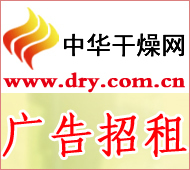
China Drying Network News In the past 10 years, China's heavy chemical industry has expanded significantly, not only causing excess capacity in most industries, but also may lead to energy saving and emission reduction tasks can not be completed. At the "6th Green Wealth (China) Forum" held on the 22nd, it was learned that the Ministry of Environmental Protection will help the "cleaning up the portal" of heavy chemical industry through the "structural emission reduction" approach.
Vice Minister of Environmental Protection Zhang Lijun said at the above forum: “The Ministry of Environmental Protection will place structural emission reductions in a more prominent position, continue to strengthen project emission reductions and manage emission reductions. Strictly control and resolutely eliminate 'two highs and one capital', Low-level redundant construction and overcapacity construction projects."
Statistics from the Chinese Academy of Social Sciences show that from 2001 to 2011, China's heavy chemical industry grew at an average annual rate of 16% to 17%, an increase of 4 percentage points over the textile industry. In the composition of industrial added value, the ratio between heavy chemical industry and light industry was 55:45 in 1998. At present, the proportion of heavy chemical industry has reached 71%, and the proportion of light textile industry is less than 30%.
At present, China's heavy chemical industry production capacity, in addition to oil and natural gas, iron ore and other upstream industries, supply shortages, most of the industry's production capacity is greater than market demand.
Lv Zheng, deputy director of the Chinese Academy of Social Sciences and deputy director of the Department of Economics, said: "China's heavy chemical industry adjustment is not to expand production capacity, but to eliminate backward production capacity and concentrate on large modern companies."
For example, Lu Zheng said that for large-scale thermal power generating units, 300,000 to 600,000 kilowatt-hours of electricity per kilowatt-hour consumed is 290 grams of standard coal, while small thermal power is at least 380 to 400 grams of standard coal; Tonnes of clinker consumes 170 kilograms of coal, while clinker production lines like large conglomerates like Conch Group produce 140 tonnes of coal per ton of clinker.
The same is true for the steel and petrochemical industries. Lu Zheng said that China’s oil refining capacity is not concentrated, and the US’s Houston region has 300 million tons of refining capacity and is integrated upstream and downstream. China's petrochemical refining capacity is 500 million tons, but its production capacity is distributed in 30 provinces and cities except Tibet. In the steel industry, the total energy consumption per ton of steel produced by small steel is close to 1 ton of standard coal, while the comprehensive energy consumption of large-scale integrated iron and steel enterprises is only 640 kg.
The reporter learned from the Ministry of Environmental Protection that as of November this year, the Ministry of Environmental Protection has strictly controlled pollution emission projects and has suspended the approval of 21 projects that do not meet the requirements, returned the report or refused it, involving a total investment of 94 billion yuan. The focus of emission reduction focuses on “six plants and one carâ€, ie, thermal power plants, steel plants, cement plants, paper mills, urban sewage treatment plants, livestock and poultry farms, and motor vehicles.
As Stencils,Drawing Fashion Plate,Drawing Stencil Kit,Different Drawing Stencil
NINGBO NEW SUCCESS ARTS AND CRAFTS CO.,LTD , https://www.craftandtoy.com